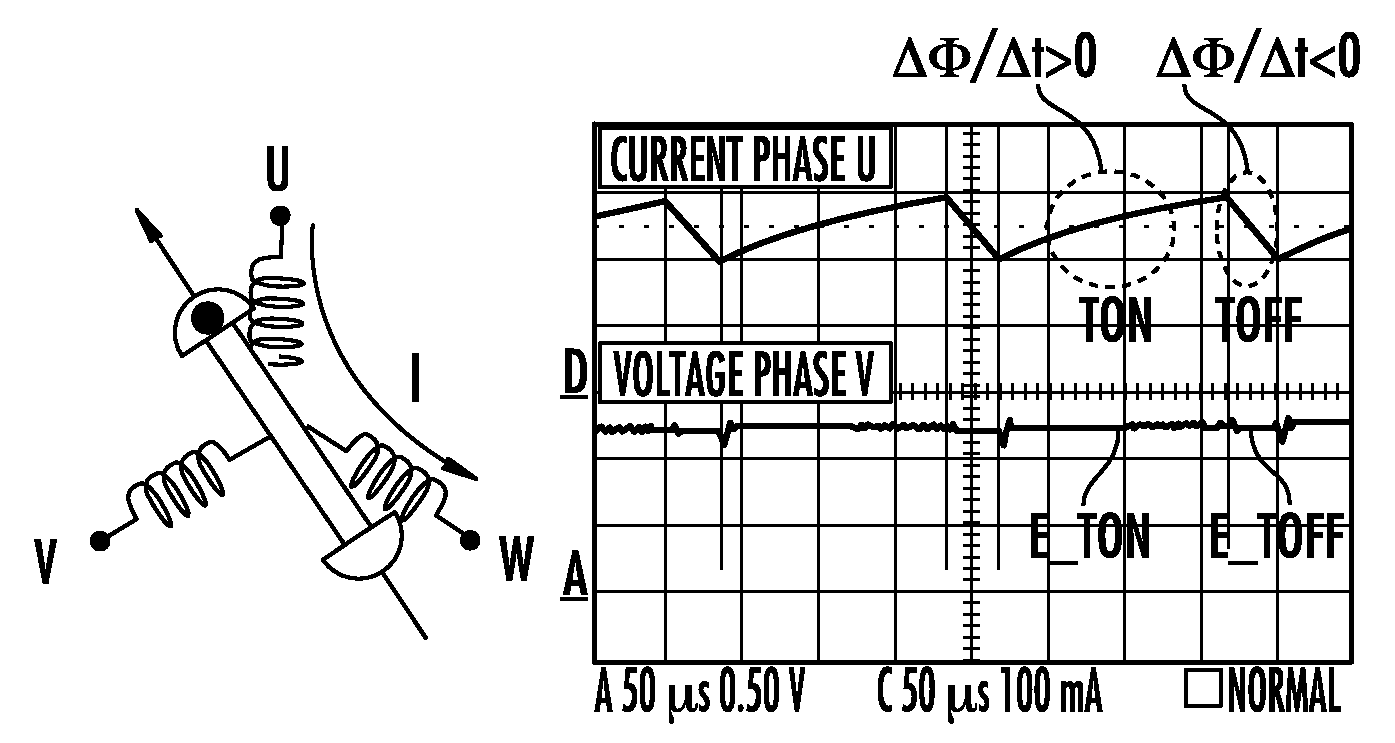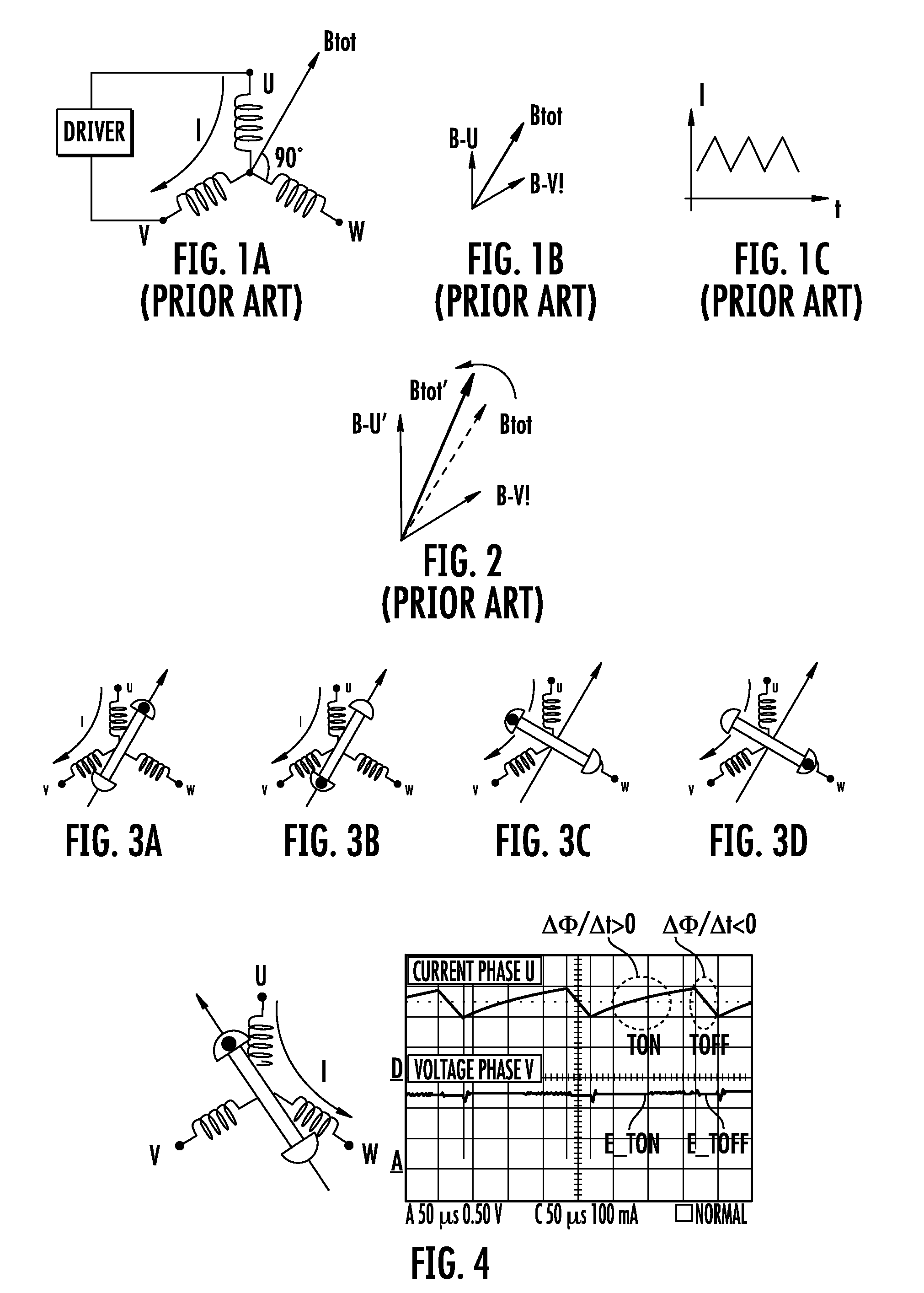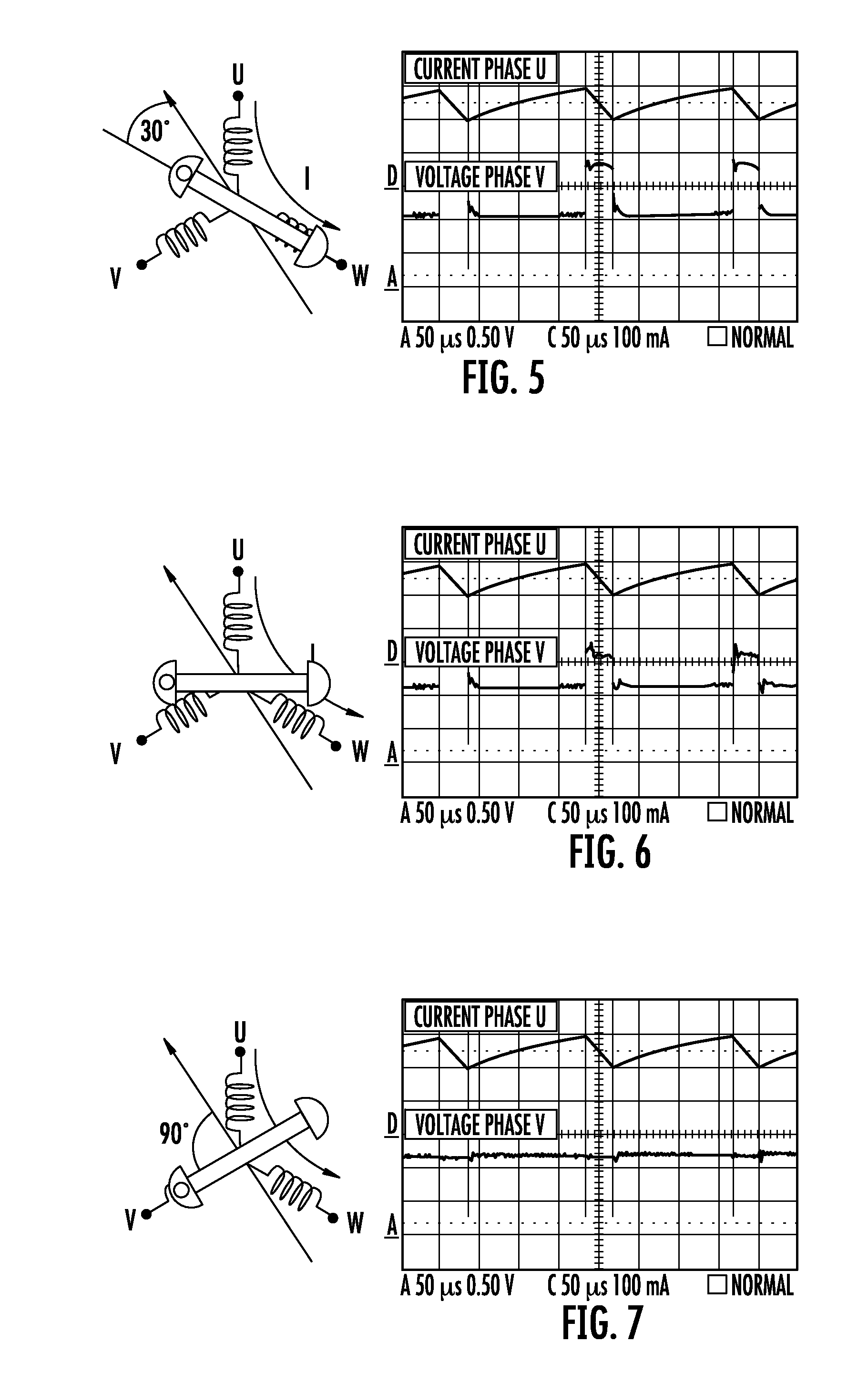Synchronization of sequential phase switchings in driving stator windings of a multiphase sensorless brushless motor at sub bemf-detectability speeds
a brushless motor and sequential phase technology, applied in the field of synchronization, can solve the problems of insufficient sensing precision, insufficient matching between distinct sense-fets, and hardly being detected
- Summary
- Abstract
- Description
- Claims
- Application Information
AI Technical Summary
Benefits of technology
Problems solved by technology
Method used
Image
Examples
first embodiment
[0065]Two phase windings of a three phase stator (U and W for example) are commonly driven with a periodic control voltage (typically a PWM or PWM-like drive control signal) producing a current through the inductive windings having a significant ripple. The drive current ripple will generate induced voltages “E” (by transformer effect) on the floating third phase winding. The sign of the induced voltage “E” sampled during either the TON interval or during the TOFF interval of the PWM or PWM-like control signal provides an effective feedback signal for a startup procedure.
[0066]According to the method, it is sufficient to drive the phase windings according to a first phase windings configuration with a sequence of TON and TOFF phases of the drive signal as long as the sign of the voltage induced on the non-conductive phase winding assumes the expected value (Expected E) for the first implemented configuration and when this occurs excitation is switched to the next phase windings conf...
second embodiment
Enhanced Torque
[0085]Different from the first embodiment, the driving of the currently selected phase windings according to a first configuration (Step1) is performed for a certain pre-established time Tstep1 instead of being continued as long as verifying an expected condition (E=Expected E) of inversion of the sign of the sampled enhanced voltage on the non-conductive winding. Each of the six phase driving configurations that are sequentially implemented upon detecting the expected sign of the sampled induced voltage, include a sub-sequence of cyclic phase switchings that continues until the expected sign of the sampled voltage for the particular phase is verified.
[0086]For each driving configuration, after a first interval of drive Tstep1 at least a successive configuration (Step2) of the cyclic drive sequence is excited for a pre-established time Tstep2 such to advance the angular orientation of the stator magnetic field vector by 60° degrees. For example, if the driven stator p...
third embodiment
Cancellation of any Superimposed BEMF
[0094]According to an intrinsic advantage of the method, the processing of the signal sensed at the tap of the phase winding that is non-conductive does not require any burdensome filtering as in the prior art systems, rather the method may simply compare samplings done both during TOFF and during TON phase of the drive signal for extracting the induced voltage unaffected by any BEMF. The effects of the BEMF that become of relevance at relatively high speed are substantially nullified making possible to detect the sign of the induced voltage “E” on the non-conductive phase winding by transformer effect even at high speeds. According to this embodiment, the induced voltage E is double sampled during TON and during TOFF phases of the drive signal and the two successive samples are compared. Of course, this requires the use of a “Sample&Hold” circuit. The manner of sampling during the TOFF phase must be chosen correctly depending on the method used ...
PUM
 Login to View More
Login to View More Abstract
Description
Claims
Application Information
 Login to View More
Login to View More - R&D
- Intellectual Property
- Life Sciences
- Materials
- Tech Scout
- Unparalleled Data Quality
- Higher Quality Content
- 60% Fewer Hallucinations
Browse by: Latest US Patents, China's latest patents, Technical Efficacy Thesaurus, Application Domain, Technology Topic, Popular Technical Reports.
© 2025 PatSnap. All rights reserved.Legal|Privacy policy|Modern Slavery Act Transparency Statement|Sitemap|About US| Contact US: help@patsnap.com



